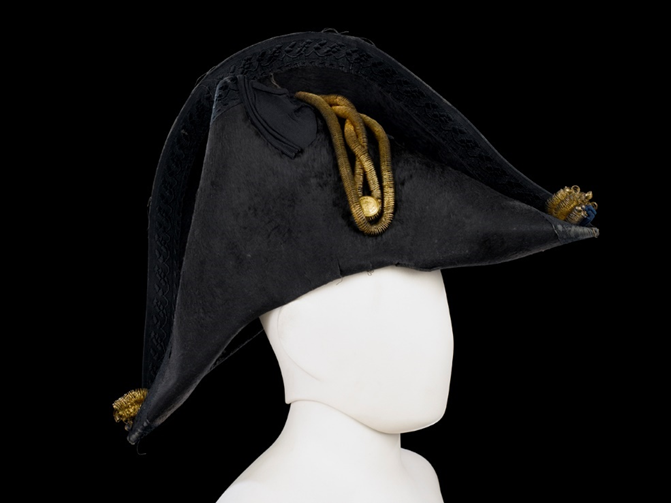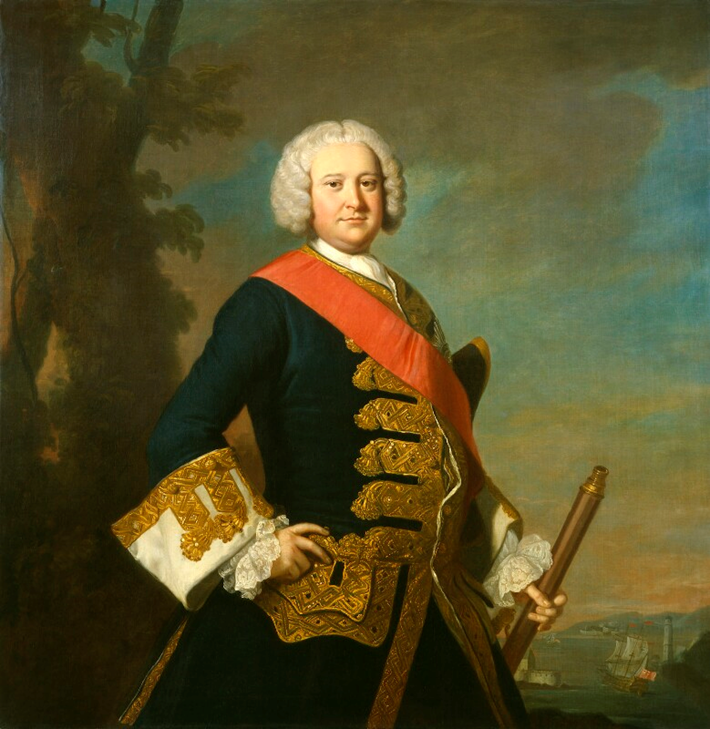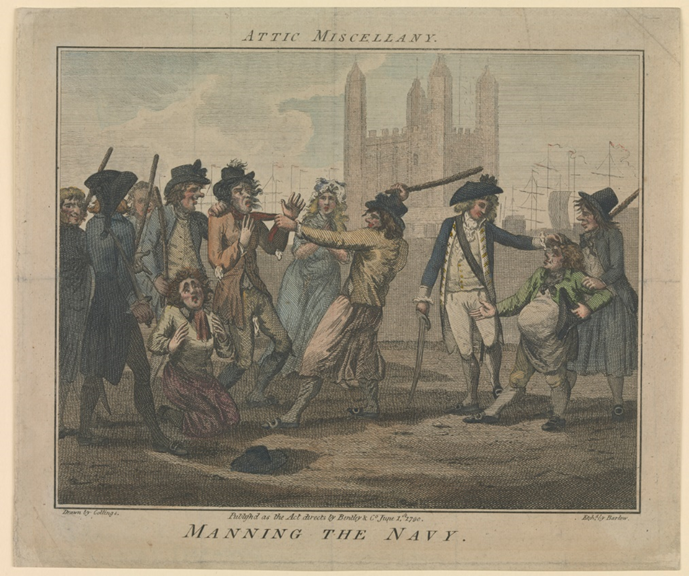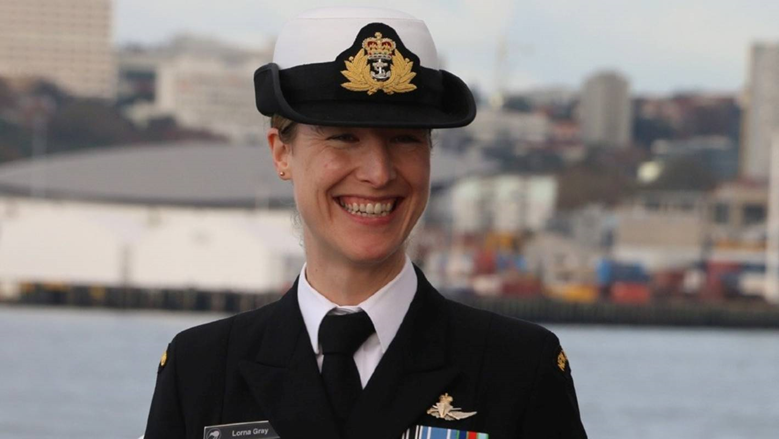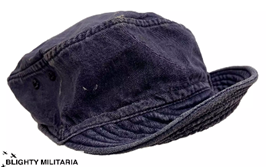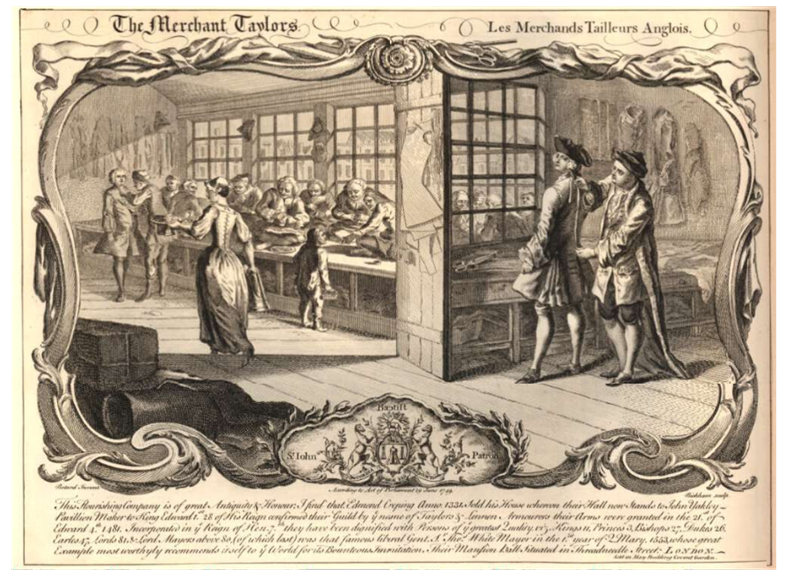What started out as a blog about me returning to Education, and embarking on a BA as a mature student Is now a blog about my Research Journey for my MA by Reseach in Fashion and Textiles. So join me for my random thoughts, notes, photos and more.
Tuesday, June 28, 2022
Interviews
Thursday, June 16, 2022
Hold ups
No problem I thought, nope I can't have it as it has my final result on and we haven't had results day yet.
Tuesday, June 14, 2022
Applications
Thursday, June 9, 2022
Proposal
Naval Headwear
Fig 1. Royal Museums
Greenwich. (1829)
Introduction
Examining how British Royal Navy
Headwear influenced the Navies of the former empire countries. Were these
influences a desire to emulate the Royal Navy or an enforced uniform policy by
a colonial empire.
How was The Royal Navy influenced, by
the headwear of the countries it inhabited, as it opened dockyards around the
world in different climates.
Justification
I
have read the work of Amy Miller, though her work focuses mainly on the
development of uniforms through the period of 1748- 1857, it does offer some
insight into the headwear worn in this period also. Figures 1 and 2 show
typical styles of early Nineteenth-century uniform headwear work by officers of
the Royal Navy.
Fig 2 Royal Museums Greenwich.
(Circa 1801)
Did
the British Royal Navy affect the dress of other navies worldwide?
The
reach of the Georgian Royal Navy was global and with it, the growth in the
British colonies, as the colonies became the commonwealth, so their Navies
became independent.
As
the Royal Navy moved around the globe, they took their customs and uniforms
with them. This influence can be seen in the navies of the former British
Colonies and Commonwealth.
Fig 3 Thomas Hudson, National
Portrait Gallery. (Circa 1751)
I
plan to investigate the development of naval headwear from the first officer's
uniforms of 1748, 110 years later for ratings in 1858, and how these uniforms
influenced other Navies around the world and the Merchant Navy.
Rear-Admiral
Sir Peter Warren can be seen in this painting (Figure 3) with his Tricorn
tucked under his arm, as was often the practice, to save ruffling your wig, or
powdering your tricorn.
John
Byron can be seen (Figure 4) be seen wearing his Tricorn, his uniform did not
meet the regulations, due to the full-length trousers.
Fig 4 National Portrait
Gallery. (1778)
In
the early days of a uniformed Royal Navy, officers still wore Tricorns and
Bicorns, through to the beginning of the modern style officers' peaked cap in
1840.
It
is important to understand how Royal Navy headwear has evolved and adapted over
the years, and the influence it has had on other navies, especially
commonwealth, and former colonies navies around the world, was this a gradual
adoption by other navies, or was this enforced by colonialism? Do these navies
still have similar headwear or have they adopted other styles now they are
independent countries again. My primary research has shown that some countries,
New Zealand, and Australia for example still wear similar headwear and rank
insignia, and both still use the Royal in the name, Royal New Zealand Navy and
Royal Australian Navy. Figure 5 shows an Officer's Bicorn, worn by Lieutenant
Frederick Oliver Handfield during his time in Australia.
Fig 5 Australian
War Memorial. (Circa 1860)
Did
this influence in uniform/headwear go both ways, I have already identified that
Royal Navy in the far East did wear Sun Helmets a type of Pith helmet worn
around Asia, adopted by the British Officers before they were officially introduced
as uniform in 1815.
Did
the Royal Navy press-ganging of sailors from around the world, play a role in
the development of uniform headwear, with the headwear they brought with them?
Fig. 6
Barlow, J, Manning the Navy. (1790).
The
image above (figure 6) shows a press gang at work on the streets of London, the
Royal Navy Officers in Tricorns, while the sailors wear similar hats to the
civilian men they are press-ganging. Press Ganging took place around the world,
whenever a ship needed more crew. This meant new crewmen would often arrive
with an assortment of headwear.
I
am mainly concentrating on the headwear worn by men, as Women have only
officially been a part of the Royal Navy since the First World War, though
their headwear has evolved a great deal in that time until 1996 when female
junior rates started to wear the same headwear as their male counterparts, to
date female senior rates and officers have retained their Tricorn caps. Figure
7 shows the first female captain of a Royal New Zealand Navy warship, her
modern Tricorn is identical to the British Royal Navy one worn by female
officers.
I
have started by looking at contemporary art and illustrations to get a feel for
the shapes and styles of headgear worn, I am aware that this is not a valid
research technique but helps identify hat types and styles. Figure 8 is
interesting as it shows several men of different ranks with various types of
headwear, fitting to their station.
Fig. 8 George Cruickshank, The Point
of Horror (1825)
I
have started to make enquiries with museum collections to view their Naval
headwear collections.
Timeline
showing key points in uniform development.
Objectives
●
To examine how Royal Navy Headwear evolved and its
influences on other services and countries Navies across the globe.
●
To establish the development of Naval headwear and its
influence across the globe
● To
establish if there is a link between headwear of the Royal Navy and other
navies around the world. Merchant Navy headwear often emulated that of its
cousins in the Royal Navy, why? Was this because of close working links, A
desire to emulate the Royal Navy or because companies such as the East India
Company established and ruled large chunks for the British Empire?
● How
did local climates and conditions affect the designs and materials used in
Naval headwear? Pith or Sun helmets in warmer climates
● How
did various roles and jobs in the Royal Navy influence the headwear worn, for
example, boiler caps (Figure 9) worn by stokers?
● Who
made Naval headwear, Naval tailors (Figure 10), or someone else?
Fig
10. George Bickman the Younger. (1749)
Literature Review
I have not been
able to find any specific research into Royal Navy headwear and its
developments. I am currently investigating, and reading other books on Royal
Navy Uniforms, and that of foreign navies.
I will also look
at the work of Beverly Lemire.
One of the things
I have found helpful with the older publications is that many have adverts for
related shops, for example, Naval tailors. I have a collection of older Naval
publications which I will search through for details of these long-forgotten
naval businesses.
Dressed to Kill, Miller, Amy
In her book
Dressed to Kill, Amy Miller gives a detailed account of naval uniforms in the
18th and 19th Centuries from the collections of the Royal Museums Greenwich,
she explores the influence it had on the fashions of the day. The book looks at
the social context that influenced uniforms of the era.
The Royal Navy 1790-1970, Wilkson-Latham, Robert
While this short
book is a history of the Royal Navy, it has a focus on the Uniforms and dress
of officers and sailors. It contains contemporary paintings, modern illustrations,
and photographs of extant garments.
A History of Clothing and Textiles for Sailors in the British Royal Navy,
1660-1859, Daley, Jennifer.
I am waiting to
be able to read this as the book is being published in Autumn, and as yet I
have not been able to read her PhD publication as it is not available online.
Nelson’s Navy, Haythornthwaite, Philip
This book looks
at the Navy during Nelson’s Career (1771-1805), it also covers the uniforms and
clothing worn by men at sea. Including some clear illustrations of men in
uniform, and sea-going clothing.
Nelson’s Sailors, Fremont-Barnes, Gregory
This book focuses
on the men rather than the Officers of Nelsons Navy in a time when only
officers had a prescribed uniform. This is a simple book with little
information but again is a good starting point.
How to survive in the Georgian Navy - A Sailors Guide, Pappalardo, Bruno
While this book
is not directly about uniforms it does give an insight into life at sea in the
18th Century.
Stripes and types of the Royal Navy, Blyth, Robert
Robert Blyth
senior curator of World and Maritime History, Royal Museums Greenwich explores
the uniforms including headwear of the Edwardian Royal Navy, this book mainly
illustrations but does give an insight into how various items of uniforms were
worn together, republished from an original publication published in 1909, by
Gale & Polden Ltd.
Naval Uniforms Through the Ages, Powers, Henry
This book
provided some useful images of sailors and officers between the 10th century
and late 19th Century, though contains no information about these images or the
garments in them.
Uniforms of the Navy, Carmen, W Y
This pamphlet
published in 1942, has a brief illustrated history of the Royal Navy uniform.
British Naval Dress, Jarrett, Dudley
Published in
1960, this book covers the first two hundred years of Naval Uniform, briefly
touching on the period before Naval Officers first received uniform regulations
in 1748. Again, this book is beautifully illustrated.
The Hats that made Britain, Long, David
Whilst not a book
about the Royal Navy or Military, this book does contain some information about
Naval and seafarer’s hats.
A gallery of Military Headdress. Bates, Stuart and Suciu, Peter
An illustrated guide of headdresses,
this guide shoes various headdresses from various eras around the world, it is
mainly Army but does have some useful information on universal items such as
metal helmets and pith helmets.
Uniforms of the World. Knotel. Richard, Knotel, Herbert and Sieg, Herbert
This older book, published in 1969,
and translated in 1980, covers mainly the Armies of the world, though does have
a section on the world’s navies from 1700 to 1939, with some interesting
comparisons between uniforms.
Methodology
Using archives, online collections,
and books, I plan to track the evolution and design differences between makers
of Royal Navy Headwear from the 18th Century
I have identified the following
sources of information.
·
Gieves and Hawkes Archive
·
Portsmouth History Centre
·
National Maritime Museum/ Royal Museums
Greenwich.
·
Portsmouth Historic Dockyard Archive
·
The National Archives
·
Chatham Historic Dockyard Archive
·
The Box Museum, Plymouth
·
Devonport Naval Heritage Centre, Plymouth
·
Imperial War Museum
·
Scottish Maritime Museum
·
HQS Wellington, Honourable Company of Master Mariners.
·
Honourable Company of Master Mariners Library
·
Using the online collection of the National
Maritime Museum/ Royal Museums Greenwich.
, I have been able to identify some of
the makers of the headwear in their collection, and in turn, have been able to
find the archives of some of these companies. These archives include personal
records for their customers.
I am aware that the National Archives
has many documents, including Monthly musters, logbooks, diaries, and other
personal documents pertaining to the issues and purchase of Naval Uniforms, and
I would hope that these many help me to establish who supplied and indeed made
the all-important headwear from various eras.
I plan to visit these archives and
have made contact with some of the curators of the collections to discuss the
headwear in the collection.
I am investigating the Naval Museums
of commonwealth countries and their online collections. To allow me to compare
the headwear worn around the world.
·
The Torpedo Bay Naval Museum
·
Australian National Maritime Museum
·
Naval Museum of Halifax, Canada
·
Naval Marine Archive, Canada
·
Canadian War Museum
I am still investigating other
collections that may be of use in research.
I will consider when certain styles of
Royal Navy headwear were worn and by whom, and how these styles
changed/evolved, I will also investigate how these styles are reflected in
other Navies around the world.
My main focus will be on the
eighteenth and early nineteenth centuries, from the introduction of uniforms.
References
● Miller,
A (Great Britain). (2007). Dressed to Kill: British naval uniform, masculinity
and contemporary fashions, 1748-1857. Royal Museums Greenwich.
● Pappalardo,
B (London). (2019). How to Survive in the Georgian Navy: A Sailors Guide.
Osprey Publishing.
● Fremont-Barnes,
G (Great Britain). (2005). Nelson’s Sailors. Osprey Publishing.
● Haythornthwaite,
P (Great Britain). (1993). Nelson’s Navy. Osprey Publishing.
● Blyth,
R (London). (2020). Stripes and Types of the Royal Navy. Royal Museums
Greenwich.
● Powers,
H (Great Britain). (Unknown) Naval Uniforms Through the Ages. Amazon.
● Wilkson-Latham,
R (Great Britain). (1977). The Royal Navy 1790-1970. Osprey Publishing.
● Long,
D (Cheltenham). (2020). The Hats that made Britain. The History Press.
● Jarrett,
D (Great Britain), (1960). British Naval Dress. JM Dent and Sons Ltd.
● Carman,
W (London), (1942). Uniform of the Navy Past & Present. Forster Groom &
Co
Image List
·
Fig 1 Royal Museums Greenwich. (1929). Royal
Navy Uniform 1827-43. [Photograph] Royal Museums Greenwich.
https://www.rmg.co.uk/collections/objects/rmgc-object-74372
·
Fig 2 Royal Museums Greenwich. (Circa 1801).
Royal Navy Cocked Hat. [Photograph] Royal Museums Greenwich.
https://www.rmg.co.uk/collections/objects/rmgc-object-71272
·
Fig
3 Thomas Hudson. (Circa 1751). Sir Peter Warren [Portrait] National Portrait
Gallery.
·
Fig 4 Artist Unknown. (1778). John Byron
[Etching] National Portrait Gallery.
·
Fig 5 Australian War Memorial. (Circa 1860).
Victorian Colonial Volunteers Officer Bicorn [Photograph]. Australian War
Memorial.
https://www.awm.gov.au/collection/C110205
·
Fig. 6 Barlow, J. (1790). Manning the Navy
[Print]. Royal Museums Greenwich.
https://www.rmg.co.uk/collections/objects/rmgc-object-108883
·
Fig. 7 Millet, M (2017). Lieutenant Commander
Lorn Gray. [Photograph]. Stuff.co.nz
·
Fig.
8. Cruikshank, G (1825). The Point of Horror [Print] Royal Museums Greenwich.
https://www.rmg.co.uk/collections/objects/rmgc-object-104328
·
Fig 9 J Compton & Sons (Circa 1950). Boiler
Cap [Cap] Militaria Zone
·
Fig 10. George Bickman the Younger. (1749). The
Merchant Tailors [Etching] British Museum.
https://www.britishmuseum.org/collection/object/P_G-12-111
·
The Proposal
That's it just over 2000 words, 10 images and the bibliography.
So now the wait for confirmation begins.
Next step Interview and then Student finance application

